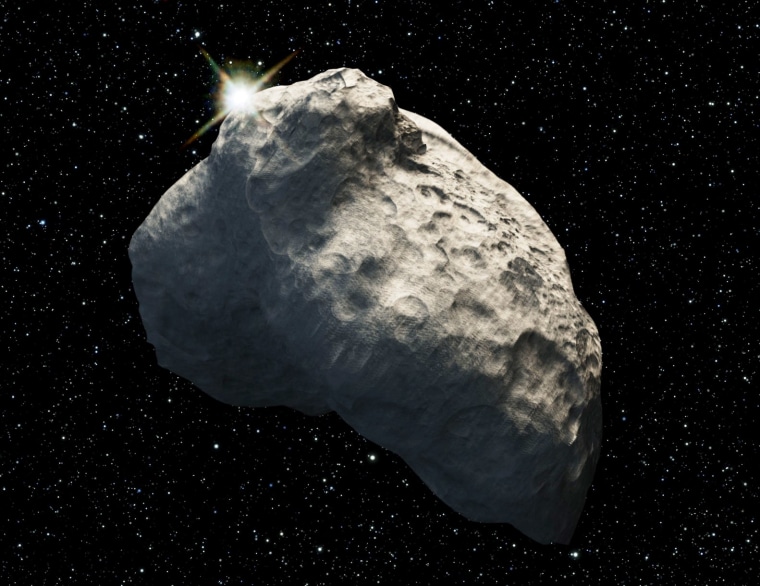A small space rock that orbits the sun from out beyond Neptune is almost completely coated in water ice, according to a new study that allowed astronomers to estimate the object's size by watching it pass in front of a star.
The icy, rock body — dubbed KBO 55636 — lies in an outer region of our solar system called the Kuiper Belt, which contains at least 70,000 small bodies orbiting farther than Neptune. The region extends out to roughly 70 times the distance between the sun and Earth. (The dwarf planet Pluto is also a Kuiper Belt object).
Learning details about these objects is generally difficult because they are relatively small, distant and dim.
The researchers decided to try a new method of estimating one body's size by tracking it as it passed in front of a distant star – an occurrence known as a stellar occultation. The astronomers measured the amount of time it took the body to pass in front of the star by watching as the star blinked out and its light was obscured.
This time measurement, combined with already-known velocity of the object, allowed the scientists to estimate that KBO 55636's radius is about 89 miles (143 kilometers).
The astronomers then used the size of the body in concert with a measure of its brightness to estimate its albedo, which is a measure of how strongly it reflects light.
"That turned out to be very high, almost 90 percent," said lead researcher James Elliot, an astronomer at the Massachusetts Institute of Technology. "That's consistent with it having a very highly reflective surface like water ice."
The finding was surprising because such old, distant bodies tend to have weathered, dull surfaces.
"Objects orbiting that far out in space get generally darkened by accumulating dust," Elliot told Space.com. "We don't have an explanation for how it could stay so pristine."
Shards of something larger
The researchers think KBO 55636 might have broken off a larger Kuiper Belt object, the dwarf planet Haumea, when that body was impacted by a smaller space rock and pieces of its icy surface were broken off.
Astronomers have tried using the stellar occultation method before to study Kuiper Belt objects, but no group has succeed until now because it's very difficult to catch the transit at precisely the right moment and from the right spot.
In order to hedge their bets, Elliot and colleagues had 18 different telescopes positioned in various locations around the Earth to make sure that at least one got a perfect view.
"The idea was to counteract the error in orbit prediction with blanket coverage on the earth so that the chances of missing it were very low," Elliot said.
The plan succeeded, and the researchers managed to catch at least one spot-on view.
Because these Kuiper Belt objects are thought to date from some of the earliest epochs of our solar system, the discovery helps scientists build up a better idea of its history over time. "By studying these and what they're made of, we can infer what the early conditions were like in the solar system when the planets were formed," Elliot said.
The astronomers detail their findings in Thursday's issue of the journal Nature.
